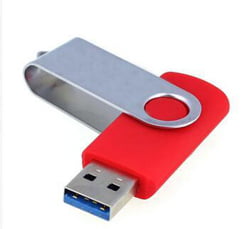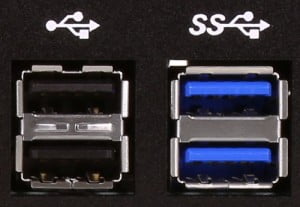 First introduced in the 1990s, the humble branded USB stick has become an essential everyday item in both work and home life for easily storing and transferring files. With over 3 billion USBs shipped out every year, these handy storage devices continue to be popular across most industries.
First introduced in the 1990s, the humble branded USB stick has become an essential everyday item in both work and home life for easily storing and transferring files. With over 3 billion USBs shipped out every year, these handy storage devices continue to be popular across most industries.
As USBs go from strength to strength, it’s fitting that 2018 marks the 10-year anniversary of USB 3.0! But there still seems to be some uncertainty over what the new version actually means in real terms and what the difference between USB 3.0 and its predecessor, USB 2.0 actually is.
Outwardly, the two types of USB appear to be the same: they are both Premium A Grade chips and there is no difference in the size of the connector. But when you take a closer look and literally ‘lift the lid’, you’ll see that the main identifying difference is the colour. You’ll notice that the USB 3.0 has a blue chip inside, rather than the standard black one. If you don’t have a 3.0 (blue) port on your computer, laptop or tablet, then you won’t get the true benefit from your upgraded USB, although it will still work on your terminal as it is backwards compatible with the earlier ports.

Since its release, USB 3.0 flash drives have proved a firm favourite with photographers and customers who have large content to upload onto their USB memory sticks. This is because it has the ability to transfer up to 4.8GB of data per second, whereas USB 2.0 has speeds of around 480 megabits per second. Meaning USB 3.0 has up to 10 times the read and write speed of its poor relation. This is sometimes referred to as SuperSpeed USB (SS), and it is estimated that using a USB 3.0 drive can save you up to an hour and a half on normal transfer times. Allowing you to spend more time editing and collating the data you want to upload.
As well as saving time, USB 3.0 also handles larger files better than its forerunner, with the ability to smoothly run HD videos direct from the drive. But if you are uploading a 4Gb file or larger, then we would recommend that you reformat your USB to Ex-FAT rather than leaving it at the standard FAT32 format. FAT32 struggles to handle larger file sizes and you may find yourself confronted with error messages, unnecessary delays and in some extreme cases, drive corruption.
Although USB 3.0 drives are a bit more expensive than USB 2.0, the benefits of faster transfer speeds far outweigh the extra costs. Our USB 3.0 flash drives are available in 8Gb memory capacity and above. And as all of the printed USB sticks in our extensive range of are compatible with USB 3.0, there are no restrictions to your choice of drive.



